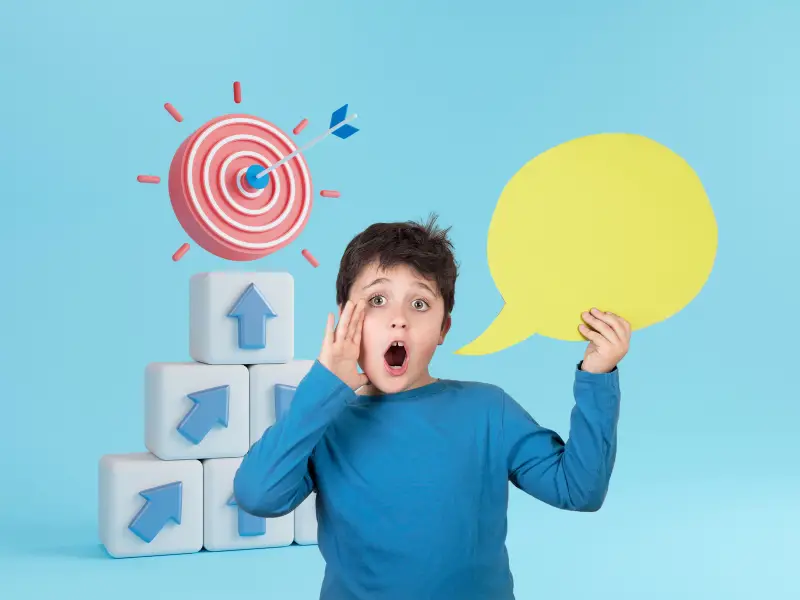Setting Goals for Effective Communication Through ABA
Communication is the cornerstone of our daily lives. It enables individuals to express desires, interact with others, and navigate the world around them. For individuals undergoing Applied Behavior Analysis (ABA) Therapy, particularly those diagnosed with Autism Spectrum Disorder (ASD), improving communication skills can be a paramount goal.
ABA communication goals aim to enhance both verbal and non-verbal communication, fostering more effective interactions with peers and adults. These goals are structured to be Specific, Measurable, Achievable, Relevant, and Time-Bound (SMART), ensuring progress can be accurately assessed and therapeutic strategies can be tailored as necessary.
In this guide, we outline 35 examples of clear and measurable ABA communication goals, offering a robust framework for therapeutic interventions. These goals span a range of communication skills, from initiating conversations and utilizing appropriate speech volume to understanding complex directives and employing self-advocacy scripts. Each goal offers a targeted objective to help individuals improve specific aspects of their communication abilities.
Areas to Target
When setting new communication goals, consider targeting the following areas to ensure well-rounded development:
a. Expressive Language
- Expanding vocabulary and sentence structure.
- Using more complex grammar and syntax.
- Expressing thoughts, feelings, and opinions clearly.
b. Receptive Language
- Understanding and following multi-step instructions.
- Comprehending abstract or figurative language.
- Responding to complex questions (e.g., “why” and “how”).
c. Social Communication
- Initiating and maintaining conversations with peers.
- Understanding and using nonverbal cues (e.g., body language, tone of voice).
- Practicing perspective-taking and empathy.
d. Functional Communication
- Requesting help or clarification in various settings.
- Using self-advocacy scripts to express needs or preferences.
- Communicating effectively during transitions or unexpected changes.
e. Pragmatic Language
- Using appropriate conversational skills, such as turn-taking and topic maintenance.
- Adjusting communication style based on the listener (e.g., speaking differently to a peer vs. an adult).
- Recognizing and repairing communication breakdowns.
f. Nonverbal Communication
- Improving eye contact and gestures during interactions.
- Using augmentative and alternative communication (AAC) devices effectively.
- Understanding and responding to others’ nonverbal cues.
g. Emotional Regulation and Self-Expression
- Identifying and communicating emotions accurately.
- Using coping strategies to manage frustration or anxiety.
- Expressing personal experiences using past, present, and future tenses.
2. Examples of More Advanced Goals
Here are examples of advanced ABA communication goals tailored to the areas outlined above:
a. Expressive Language
- “Sarah will use compound sentences (e.g., ‘I want to play outside, but it’s raining’) in 8 out of 10 opportunities.”
- “Michael will describe a sequence of events (e.g., his morning routine) using at least five sentences.”
- “Emma will use at least five new vocabulary words related to her favorite topic in spontaneous conversations.”
b. Receptive Language
- “Liam will follow three-step instructions (e.g., ‘Put your toys away, wash your hands, and sit at the table’) in 9 out of 10 trials.”
- “Sophia will answer ‘why’ and ‘how’ questions about a short story with 80% accuracy.”
- “Noah will identify the main idea and two supporting details from a paragraph read aloud.”
c. Social Communication
- “Ava will initiate a conversation with a peer by asking a relevant question in 8 out of 10 opportunities.”
- “Ethan will maintain a conversation for at least six turns, including asking follow-up questions.”
- “Isabella will recognize when a peer is upset and respond with an appropriate comment or question.”
d. Functional Communication
- “Lucas will request a break using a full sentence (e.g., ‘I need a break, please’) in 9 out of 10 instances when feeling overwhelmed.”
- “Mia will ask for clarification when she doesn’t understand an instruction (e.g., ‘Can you explain that again?’) in 80% of opportunities.”
- “Jacob will use a self-advocacy script to express his preferences (e.g., ‘I’d like to work on math first’) in 7 out of 10 trials.”
e. Pragmatic Language
- “Olivia will take turns during a group discussion without interrupting in 90% of observed opportunities.”
- “Daniel will change the topic of conversation appropriately by using a transition phrase (e.g., ‘That reminds me of…’) in 8 out of 10 trials.”
- “Chloe will recognize when someone doesn’t understand her and rephrase her statement to clarify.”
f. Nonverbal Communication
- “Ella will maintain eye contact for at least 5 seconds during a conversation in 8 out of 10 opportunities.”
- “Ryan will use gestures (e.g., pointing, nodding) to support his verbal communication in 90% of interactions.”
- “Grace will use her AAC device to ask a question or make a comment during a group activity in 7 out of 10 trials.”
g. Emotional Regulation and Self-Expression
- “Jack will identify and label his emotions using a feelings chart in 9 out of 10 instances.”
- “Sophie will use a coping strategy (e.g., deep breathing) to calm herself when frustrated, then communicate her feelings in 8 out of 10 occurrences.”
- “Lily will describe a personal experience using past, present, and future tenses (e.g., ‘Yesterday I went to the park, today I’m playing at home, and tomorrow I’ll visit Grandma’).”
3. Tips for Setting Advanced Goals
- Build on Existing Skills: Ensure new goals are slightly more challenging than what the child has already mastered.
- Focus on Generalization: Encourage the use of skills across different settings (e.g., home, school, community) and with various people (e.g., peers, teachers, family).
- Incorporate Interests: Use the child’s interests to motivate them to practice new skills (e.g., if they love dinosaurs, create goals around dinosaur-themed conversations).
- Collaborate with the Team: Work with parents, teachers, and therapists to ensure goals are consistent and supported across environments.
- Monitor Progress: Regularly assess the child’s progress and adjust goals as needed to keep them challenging yet achievable.
By targeting these advanced areas and setting clear, measurable goals, you can help children with autism continue to develop their communication skills and achieve greater independence and confidence in their interactions. Let me know if you’d like further assistance!
35 Example ABA Goals
- “John will use eye contact when making a request 4 out of 5 times in a week.”
- “Jane will use a functional ‘no’ or ‘stop’ to refuse items or activities in 90% of opportunities.”
- “Jack will respond accurately to ‘who,’ ‘what,’ ‘where,’ and ‘when’ questions in 8 out of 10 trials.”
- “Alice will use a PECS (Picture Exchange Communication System) to make requests during snack and lunch.”
- “Tom will follow simple two-step verbal instructions (e.g., ‘get your backpack and sit at the table’) in 4 out of 5 opportunities.”
- “Emma will use appropriate conversational skills, including turn-taking and topic maintenance, in 90% of observed opportunities during social interactions.”
- “Jake will communicate a desire to play with a peer by gesturing or verbally prompting in 9 out of 10 opportunities.”
- “Sophia will understand and use age-appropriate vocabulary words across all classroom settings.”
- “Sam will initiate non-preferred tasks by asking for help instead of engaging in challenging behavior in 8 out of 10 occurrences.”
- “Mary will use complete sentences of four or more words during classroom discussions.”
- “Billy will independently ask for a break using the appropriate “break” card in 4 out of 5 times when appearing upset or overwhelmed.”
- “Mike will use 20 new core vocabulary words expressively in natural settings.”
- “Liam will verbally communicate his needs and wants to both peers and adults in 80% of opportunities.”
- “Hannah will respond correctly to ‘yes/no’ questions relating to her immediate environment consistently over one week.”
- “Lucas will increase the use of self-advocacy scripts in class when he does not understand instructions.”
- “Olivia will verbally greet a familiar person spontaneously in 8 out of 10 occurrences.”
- “Alex will engage in reciprocal communication exchanges with peers throughout the school day.”
- “Emily will increase spontaneous meaningful speech in the natural environment.”
- “Tyler will request preferred objects or activities from peers using full sentences in 8 out of 10 trials.”
- “Gabby will correctly use pronouns (I, you, he/she) in conversational speech.”
- “Noah will maintain a topic of conversation for at least 4 conversational turns in 70% of opportunities.”
- “Bella will introduce a change of topic during ongoing conversations with peers or adults in 4 out of 5 opportunities.”
- “Aiden will accurately respond to complex directives given in the classroom setting 90% of the time.”
- “Amelia will verbally express personal experiences using past, present, and future tenses appropriately.”
- “Ben will independently ask for help or clarification using an appropriate volume and tone in 7 out of 10 trials.”
- “Ella will use polite forms (please, thank you, excuse me) spontaneously in appropriate situations.”
- “Zach will increase the use of verbal self-regulation strategies during frustrating situations.”
- “Ava will correctly identify and communicate her emotions in 85% of instances.”
- “Chris will maintain an appropriate volume while speaking in 9 out of 10 measurements throughout the school day.”
- “Harper will use words or short sentences to transition between activities instead of exhibiting challenging behaviors.”
- “Evan will vocalize part or all of a social story to deal with changes to routine.”
- “Lily will increase the use of language for a variety of functions: stating, commenting, asking, calling, and labeling.”
- “Dylan will respond within 5 seconds of his name being called in 80% of trials.”
- “Zoe will increase her use of 2-3 sentence phrases to communicate wants, needs, and thoughts to others.”
- “Connor will spontaneously comment on his own actions or activities at least three times per day.”
Once a child has achieved their initial communication goals, it’s important to set new, more advanced objectives to continue their progress. These goals should build on existing skills while introducing greater complexity and independence. Below, we break down the possible areas to target in advanced ABA communication goals and provide examples of more advanced goals for each area.
Examples of More Advanced Goals
Here are examples of advanced ABA communication goals tailored to the areas outlined above:
a. Expressive Language
- “Sarah will use compound sentences (e.g., ‘I want to play outside, but it’s raining’) in 8 out of 10 opportunities.”
- “Michael will describe a sequence of events (e.g., his morning routine) using at least five sentences.”
- “Emma will use at least five new vocabulary words related to her favorite topic in spontaneous conversations.”
b. Receptive Language
- “Liam will follow three-step instructions (e.g., ‘Put your toys away, wash your hands, and sit at the table’) in 9 out of 10 trials.”
- “Sophia will answer ‘why’ and ‘how’ questions about a short story with 80% accuracy.”
- “Noah will identify the main idea and two supporting details from a paragraph read aloud.”
c. Social Communication
- “Ava will initiate a conversation with a peer by asking a relevant question in 8 out of 10 opportunities.”
- “Ethan will maintain a conversation for at least six turns, including asking follow-up questions.”
- “Isabella will recognize when a peer is upset and respond with an appropriate comment or question.”
d. Functional Communication
- “Lucas will request a break using a full sentence (e.g., ‘I need a break, please’) in 9 out of 10 instances when feeling overwhelmed.”
- “Mia will ask for clarification when she doesn’t understand an instruction (e.g., ‘Can you explain that again?’) in 80% of opportunities.”
- “Jacob will use a self-advocacy script to express his preferences (e.g., ‘I’d like to work on math first’) in 7 out of 10 trials.”
e. Pragmatic Language
- “Olivia will take turns during a group discussion without interrupting in 90% of observed opportunities.”
- “Daniel will change the topic of conversation appropriately by using a transition phrase (e.g., ‘That reminds me of…’) in 8 out of 10 trials.”
- “Chloe will recognize when someone doesn’t understand her and rephrase her statement to clarify.”
f. Nonverbal Communication
- “Ella will maintain eye contact for at least 5 seconds during a conversation in 8 out of 10 opportunities.”
- “Ryan will use gestures (e.g., pointing, nodding) to support his verbal communication in 90% of interactions.”
- “Grace will use her AAC device to ask a question or make a comment during a group activity in 7 out of 10 trials.”
g. Emotional Regulation and Self-Expression
- “Jack will identify and label his emotions using a feelings chart in 9 out of 10 instances.”
- “Sophie will use a coping strategy (e.g., deep breathing) to calm herself when frustrated, then communicate her feelings in 8 out of 10 occurrences.”
- “Lily will describe a personal experience using past, present, and future tenses (e.g., ‘Yesterday I went to the park, today I’m playing at home, and tomorrow I’ll visit Grandma’).”
Measurement Tools for Communication Goals in Autism
One important aspect of communication is gauging exactly how well your child communicates.
Assessing communication in individuals with Autism Spectrum Disorder (ASD) involves the use of several different tools specifically designed to measure various aspects of linguistic and social communication abilities[1%5E]. These tools are crucial for setting appropriate and actionable goals in Applied Behavior Analysis (ABA) therapy and measuring progress toward them.
Communication measurements for ASD encompass several different areas, including understanding and use of language, the capability for interpersonal communication, non-verbal communication, the performance of language within various social contexts, and the individual’s overall ability to communicate effectively with others[2%5E].
- Language Assessment Tools: These measure the individual’s vocabulary, syntax, and other linguistic skills. Some commonly used language assessment tools include the Peabody Picture Vocabulary Test (PPVT), the Clinical Evaluation of Language Fundamentals (CELF), and the Preschool Language Scale (PLS)[link].
- Social Communication Assessment Tools: These measure how an individual uses their communication skills within social scenarios. It includes tools to measure social dialogue, the ability to decode non-verbal cues, and other facets of interpersonal communication. These can include tools like the Social Communication Questionnaire (SCQ), Autism Diagnostic Observation Schedule (ADOS), and the Social Responsiveness Scale (SRS)[link].
- Functional Communication Assessment Tools: These measure how effectively an individual can convey their message, request assistance, demonstrate their needs, and interact with others during daily routines. It often involves the use of the Functional Communication Profile (FCP) or the Functional Communication Training (FCT)[link].
- Communication Behavior Assessment Tools: These evaluate the person’s behaviors related to communication, including any challenging behaviors that might inhibit effective communication. These assessment tools can include the Behavior Assessment System for Children (BASC) and the Behavior Rating Inventory of Executive Function (BRIEF)[link].
Regular assessments using these tools can monitor an individual’s communication skill growth, gauge the effectiveness of communication strategies, identify areas that need additional support, and deliver data-driven therapy to promote continued progress toward ABA communication goals.
Sources:
- American Academy of Pediatrics
- Pearson Assessments
- Neuropsychological Assessment in Autism Spectrum Disorder
- Springer
- American Academy of Pediatrics
- Pearson Assessments
More from the blog:



